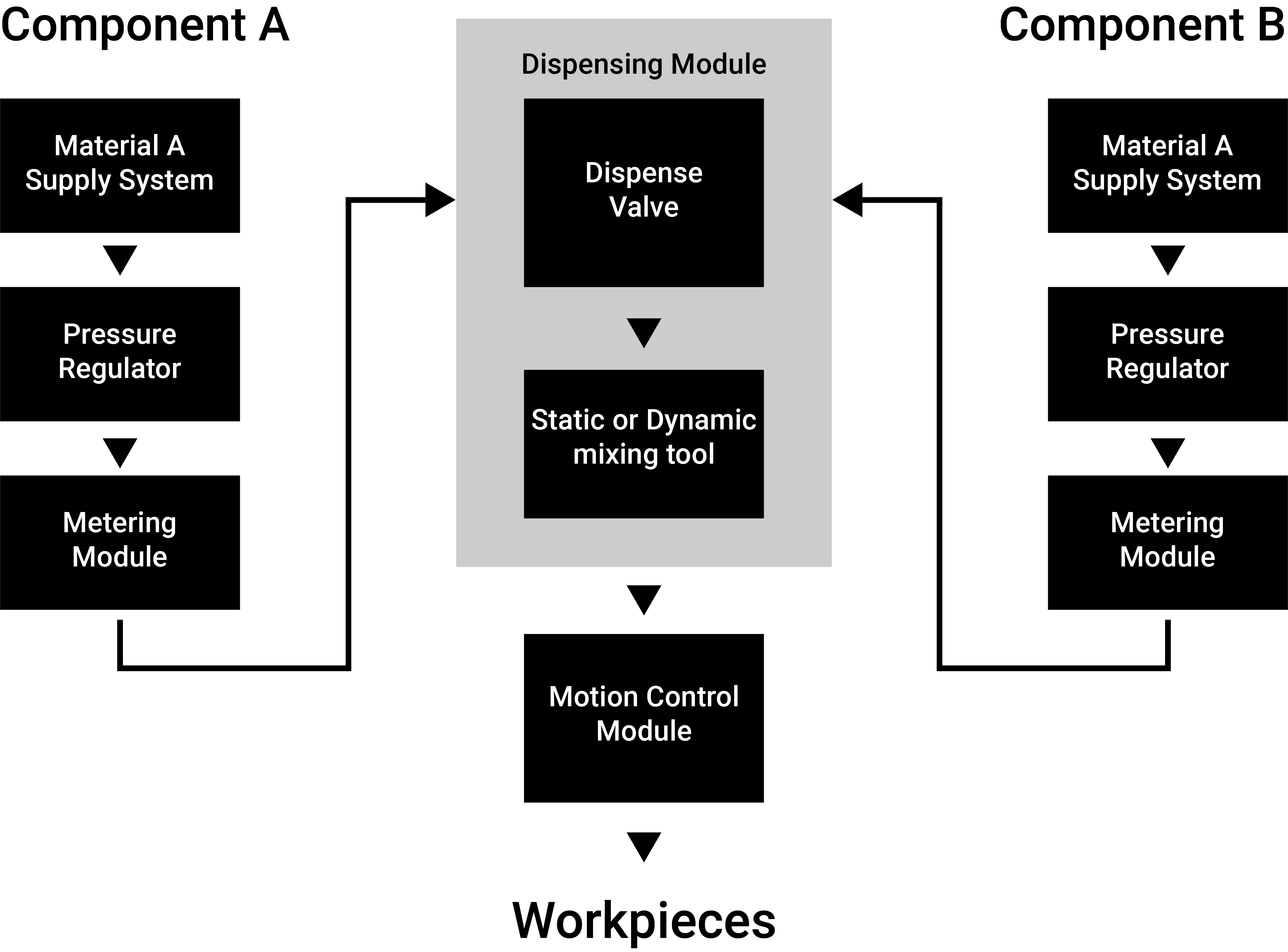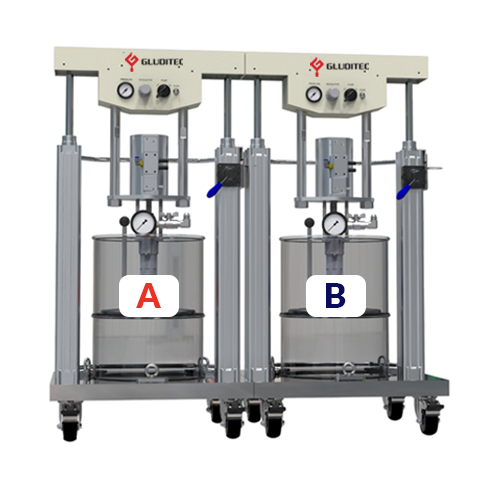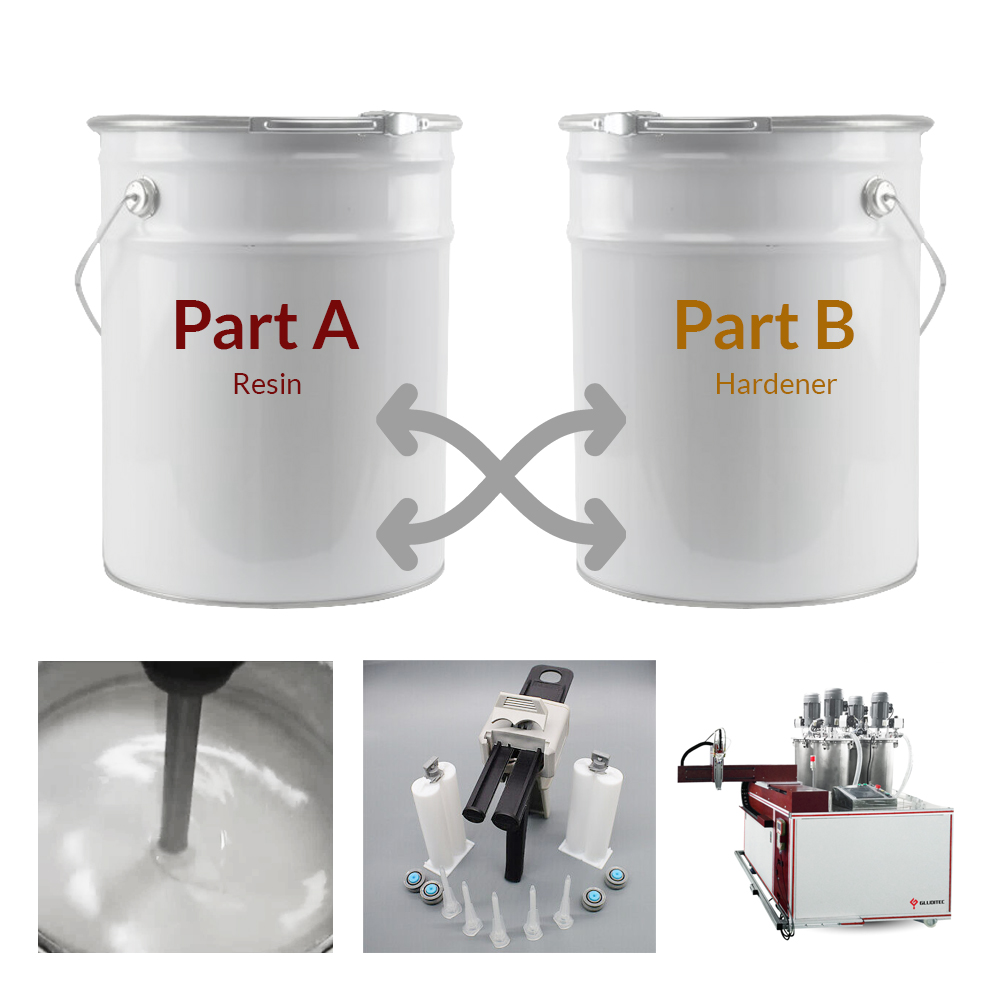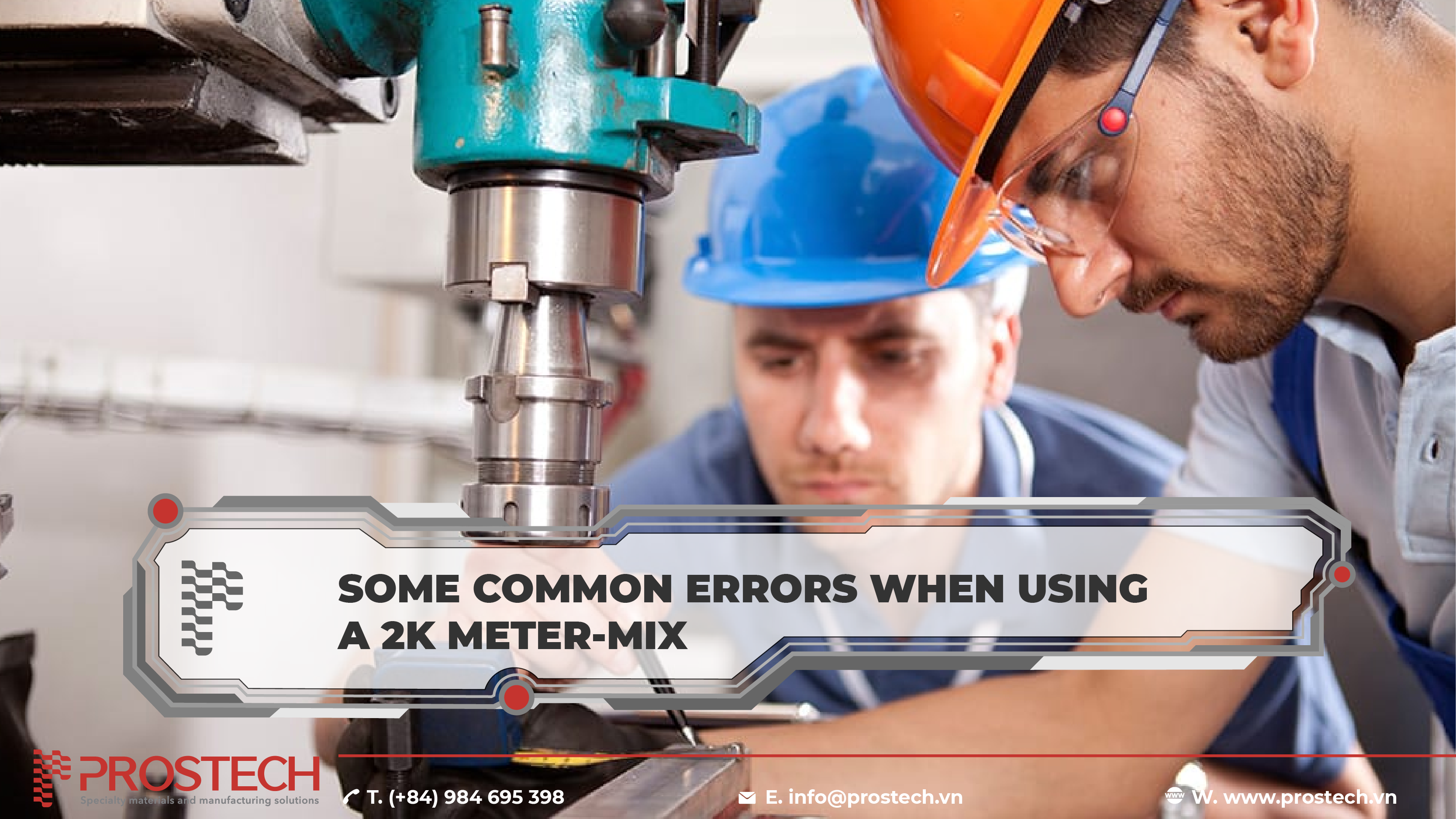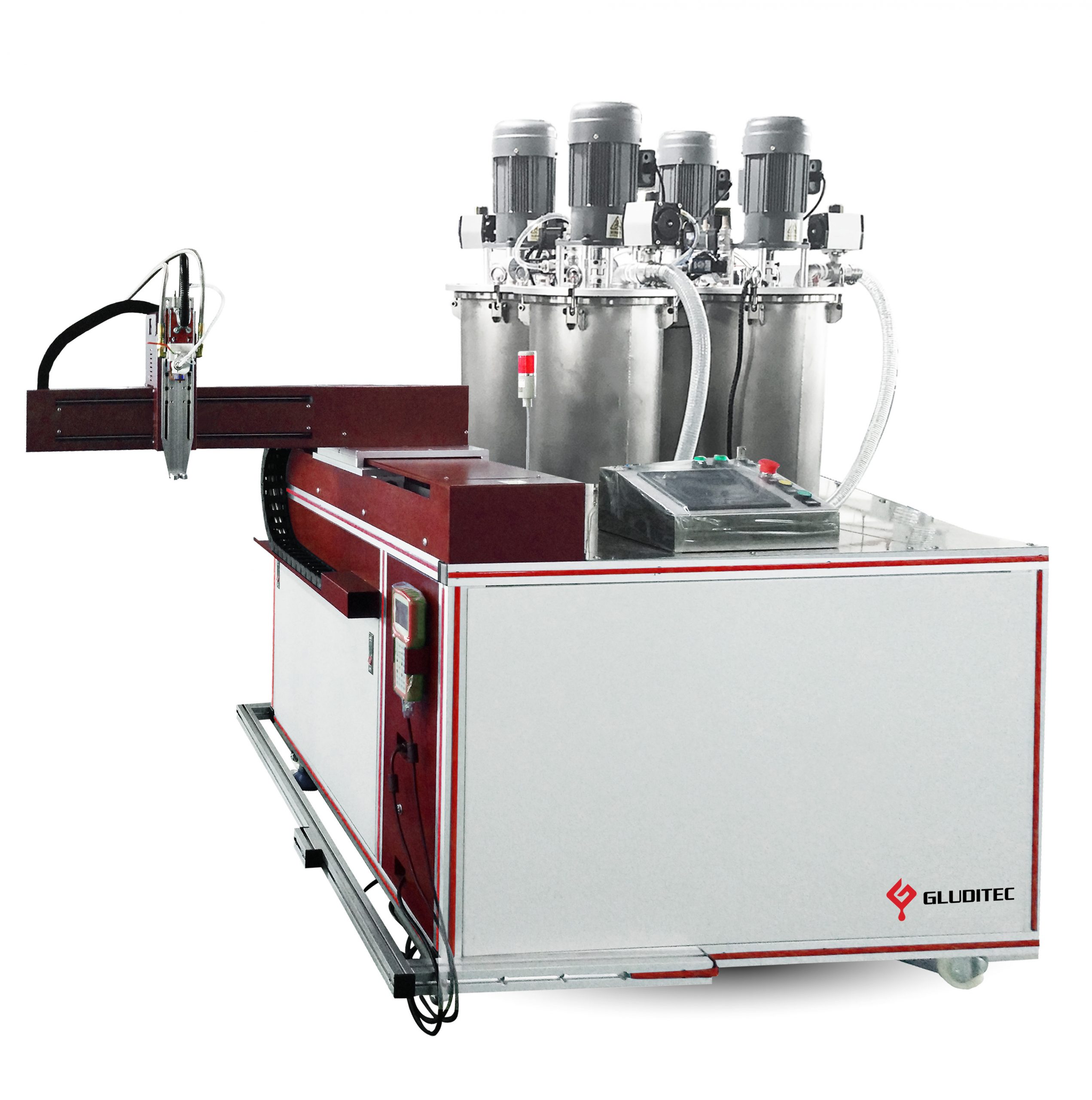There are many different metering and dispensing systems available today, which all satisfy the needs of different types of tasks. However, almost MMD System has the same configuration and operating mechanism as follow:
Material Supply System
The structure of the material supply system will depend on the original size of the liquid and vacuum dispensing demand of the manufacturer.
In mass production, drums, pails, and totes are often used to package larger amounts of adhesives and sealants. To unload material from these containers, three options are typically available depending on material temperature, viscosity, and pressure requirements – Manual pouring into Pressure Pot or Tank, Suction Pumps, and Follower-Plate Pumps.
Manual pouring into Pressure Pot or Tank

Pressurized containers meet various cold adhesive delivery requirements with a range of filling capacities, typically from 10L to 60L. These containers provide protection against corrosion with wetted fittings and tank casings made of stainless steel. They can also improve bonding performance by incorporating adhesive filters that remove contaminants.
Many pressurized containers also offer wide openings and straight-wall designs that speed manual filling and cleaning. Manually filling pressurized containers can be labor-intensive, and manufacturers must consider the costs associated with such labor as well as spillage. The manual filling works best for materials less than 1,000 cps.
However, manual pouting by hand can add air into a liquid part, which can make negative effects on the specification of liquid.
Suction Pump from drum into Pressure Pot or Tank
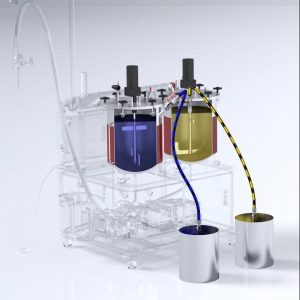
Suction Pump is an alternative for manual pouring methods to feed material from the drum into the pressure pot or tank. This pump technology is known as the heart of the feeding system, of which sensors individually determine the degree of filling here. This ensures a continuously high feeding performance.
Furthermore, the hole carrying liquid from the drum to the pressure tank can be equipped with a heater that secures the viscosity of liquid all over the pumping process.
Auto-filling, heating, and fast pumping technology play an important role to achieve high productivity at the end of the day.
Follower Plate Pump


Follower plate pumps can be used to unload ambient and heated materials. Two types of follower plate pumps are available – bulk for precise application of heated materials and bulk unloaders for ambient pastes and mastics.
Bulk delivers simple, low-maintenance applications of liquids such as adhesives, sealants, and butyls. Modular, non-stick platens, available for 200-liter (55-gal) drums, adhesive on only the top surface of the drum, reducing thermal stress and protecting bonding characteristics. Various platen designs are usually available.
Bulk unloaders dispense high-viscosity, ambient-temperature adhesives, and sealants for a variety of manufacturing applications. Available in 20- and 200-liter (5- and 55-gal) capacities, their durable design provides superior flow properties and maximum operating time. Most bulk unloaders are designed with large internal passages that minimize flow resistance and material shearing to maintain consistent material viscosity with less degradation. Typically, bulk unloaders can accommodate changing application requirements with interchangeable air motors, pumps, and follower plates. Many also offer a wide range of options to customize.
Pressure Regulator

Then the two liquid materials will be transferred through a pressure regulator, which help to reduce the pressure of the fed material to the required working pressure.
Apart from pressure reduction (main function), these valves also compensate for pulsations occurring during material delivery with piston pumps due to the changeover position of the pump.
Metering Module

Every two-part material has its own mixing ratio which must be followed strictly if manufacturers desire a perfect-function mixture. As a result, a metering unit is essential for accurate volumetric dispensing of multicomponent adhesives. Meters help dispense precise volumes of adhesive at precise time intervals and pressures. The ratio and flow rate can be fixed or variable.
Traditionally, multicomponent liquids were mixed by hand, with a process like making cookie dough. Hand mixing requires weighing specific amounts of catalyst and base. However, it resulted in numerous headaches, such as inconsistent performance, poor quality, and excessive cost. Fortunately, a wide variety of manual and automated systems is available.
To solve these problems, in the metering module, in detail, many pump technologies have been introduced. They offer an alternative to hand mixing. They provide precise ratio control, improved mixing, little or no wasted material, and limited exposure to toxins.
The heart of the metering module is pump technologies. A pump is used to transfer the adhesive from a point of supply, such as a 5-gallon pail, a 55-gallon drum, or a 300-gallon tote, to a dispense head. A wide variety of pumping technology and equipment choices is available.
See details here
Dispensing Module
Dispensing Module basically combines a dispensing valve and a static or dynamic mixing tool.
Dispensing Valve

Two-component (2K) dispensing valve for the dispensing of materials will keep the base and catalyst components separate until they enter a static or dynamic mixing tube. Valve will be mounted on the robot arm (or Z axes with desktop robot) and move according to users’ programmer. Like pump technology, 2K dispensing valves have various types and advanced functions:
Adjusting quickly and easily the volume of dosing with the control of the rotation and speed of the rotor
Designed with a negative pressure shut-off to prevent dripping
Directly control the mix ratio of the 2-component materials for flexibly switching among applications and projects
Specific option applied when the viscosity difference or mixing ratio between the two components is big and is produced by combining pumps of different capacity (material supply system)
Of course, there are must-have features of a two-component dispensing valve for high productivity: highly efficient, reproducible, accurate, and high degree of precision.
Details about various types of 2K Dispensing Valve
Mixing Tips

After traveling a long way through almost ¾ dispensing system, the two components will be mixed in mixing tips. These tips are disposal materials, which make dispensing module maintenance easier and economical dispensing possible.
There are numerous criteria to consider when choosing a mixer. See selection guideline here.
However, at first, it is essential to make a decision whether static mixing or dynamic mixing method. While static mixers have been around since the 1960s and have been used widely up to now, the technology has changed very little over the years. One of the newest developments is a disposable mixer featuring a square-element geometry based on computer simulation. The pressure drop in square mixers is said to be much lower than helical-type mixers with the same dimensions.
In dynamic mixers, materials are rotated with an auger or paddle within a mixing chamber by means of rotary air, electric or hydraulic motors. In dynamic mixing, the material passes into a chamber with a rotating element. Higher mixing and shear are created, providing better mixing.
Read more about Static and Dynamic Mixing here.
Motion Control Module
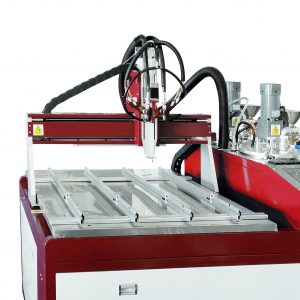
Finally, the most important module building up an automated system: the motion control with robots.
This module takes charge of delivering the mixed compound to the workpieces. By programming the robots, manufacturers easily control cycle time, production speed, and accuracy.
Advanced dispensing systems have defect inspecting functions which significantly help to reduce costly repairing activity.
Furthermore, the working space of the robot can be customized to fit with manufacturers’ demands of productivity and cycle time.
Thanks to modular construction, any robot system suitable for the applications can be integrated into your production line. Selecting an appropriate robot will depend on productivity, existing production line, accuracy, and quality as well as quantity of workpieces.
See full options of automated dispensing systems with robots here.
Selecting the right Two-component liquid dispensing system has never been an easy task. Contact us for a further consultant from experts:
Hotline: (+84) 984 695 398
Email: gluexpert@prostech.ph



